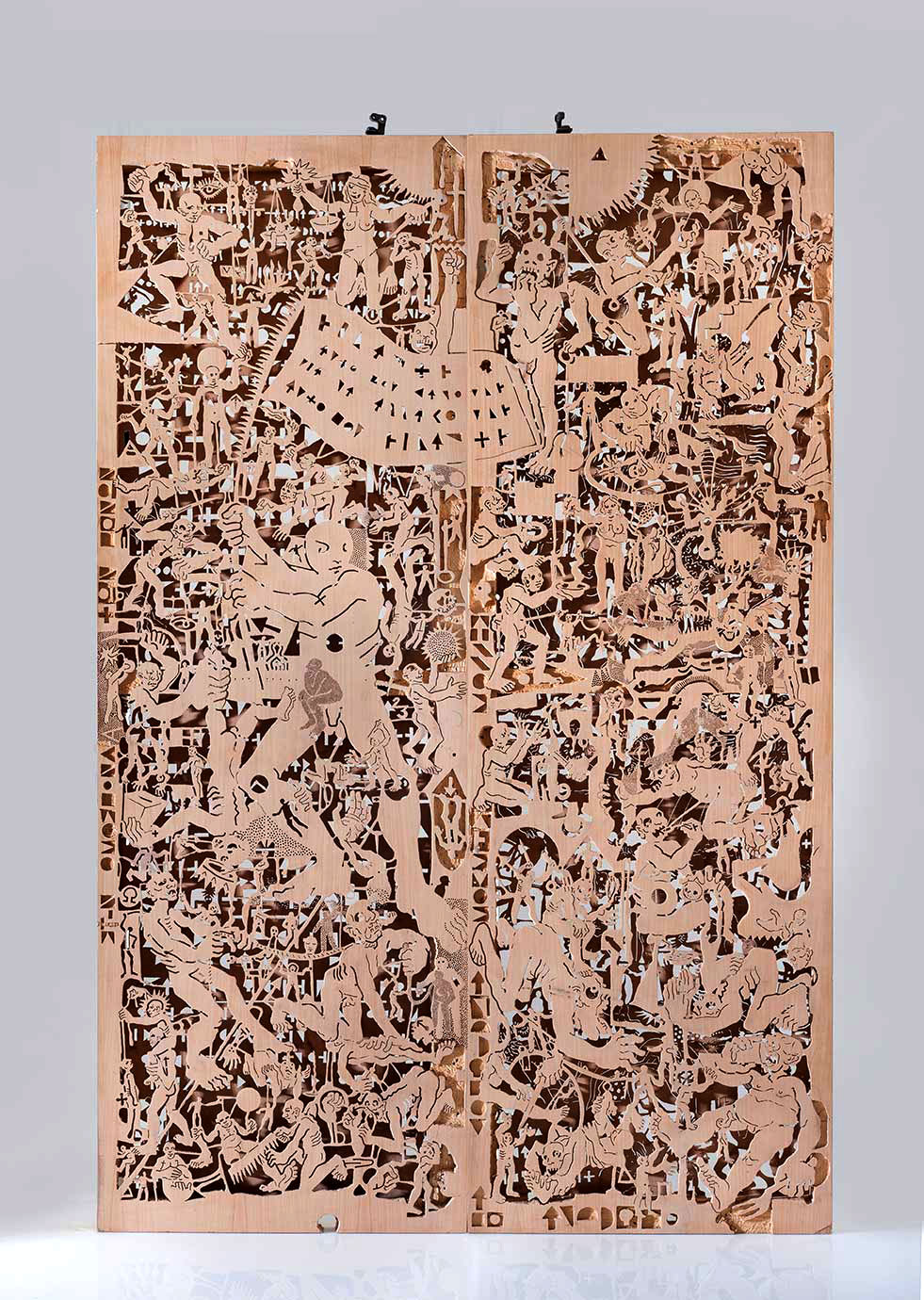Filled with
Wooden double leaf sliding door, 80 x 240 cm
The arch, despite its significance as a passageway and connecting point, is instead approached as a means of separation and enforcement. It is directly linked to colonialism, which acts as an “intellectual regulator”, potentially conveying the values of Western civilization, monotheism,
The artwork, on the contrary, alludes to the unknown and the unsung, the broader political subject; the domestic and foreign barbarians, whose cultural characteristics are usually oppressed and create an “other”, which when not marginalized, is subject to
The artwork refers indirectly to the contradictions and the process of power legalization through cultural
The work’s key reference is the Gates of Hell (1880-1917) by Auguste Rodin, with motifs from the descriptions of Purgatory in Dante Alighieri’s Divine Comedy and influenced by the style in Baudelaire’s Flowers of Evil: The first monumental rendering of passions and a realistic, non-
The order of the representations is structured as follows: Conflict on the front left side and language on the back; Desire on the front right side, and nature on the back. The style is affectedly barbaric with rigid, rough, unprocessed surfaces; with loans from the culture of woodcuts and a delirious aesthetics akin to the chaotic reality of the present day, it challenges the definition of the “Barbarian”.
The work also documents phrases, thoughts and literary fragments rejected by the mainstream discourse. The language, however, an element of enforcement in turn, gives way to a codification that cannot escape from its original grammar and syntax foundation. The invention of the codified font aims to transliterate without an explanatory purpose. It also alludes to the opulent and classified nature of the specific codes of the marginal – beyond the mainstream – languages (slang, guilds, thieves, etc.).





